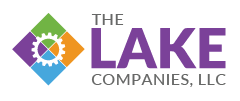Technology: The Panacea for Manufacturing Workforce Shortages

The United States unemployment rate remains strong at 3.7% as of this writing, but in the manufacturing industry, demand is outpacing supply with hundreds of thousands of jobs going unfilled. Year after year, the number one problem plaguing every sector of manufacturing is labor shortages for skilled positions. Positions such as machinists, operators, craft workers, distributors and technicians require the most training and are traditionally among the hardest manufacturing jobs to find existing talent to fill.
The manufacturing sector has been stuck on a sandbar in a river for the past several years, with an acute rise in job openings in recent years. According to the Bureau of Labor Statistics (BLS) total openings in the manufacturing sector reached an unprecedented monthly average of 508,000 in August of 2018.
The Federal Reserve reports the shortage of skilled and highly skilled workers necessary for manufacturing operations has created difficulties along entire supply chains, exacerbated by a lack of career and technical education, science, technology, engineering and mathematics (STEM) skills among workers and a negative perception of the manufacturing industry among younger generations.
Many students and their families undervalue or misunderstand technical careers and the growing need for a skilled, technical workforce, thus dismissing valuable options at community colleges and technical schools.
The Manufacturing Institute and Deloitte concluded in The Skills Gap in Manufacturing that some 22% of skilled manufacturing workers, or 2.7 million valued employees, are retiring over the next decade. Industry growth means companies will need to add another 700,000 skilled employees. This equates to a total of 3.4 million workers being needed. But due to a variety of factors, the industry is projected to fall a startling 2.0 million workers short of its needs.
That means if you’re running a 100-person, or 1,000-person manufacturing operation, you’ll need to attract 22 or 220 new skilled workers respectively just to replace retirees. If you’re growing, your needs will be even higher.
Solving the Problem
The most innovative and tech-forward companies are seeing significant improvements throughout their organizations. In October The White House announced strategic plans to push American leadership in advanced manufacturing. The plan calls for developing new manufacturing technologies, training the workforce and expanding of the domestic manufacturing supply chain.
The report addresses the problem by saying, …many young people who may benefit the most from those high-skill, high-paying jobs are missing out due to outdated presumptions that all manufacturing jobs are still repetitive, labor intensive, and low-paying, or concerns about the future of such jobs in America. Many students and their families undervalue or misunderstand technical careers and the growing need for a skilled, technical workforce, thus dismissing valuable options at community colleges and technical schools.
Pay attention…this is important
The White House report goes on to say, The advanced manufacturing workforce needs to have the capability to effectively design, customize and implement advanced manufacturing methods to increase productivity and develop new products.
The good news is, it’s not your daddy’s old factory. Say goodbye to dirty, smelly job shops with horribly repetitive, backbreaking, tasks with wildly impossible piece rate quotas. That dog won’t hunt anymore!
Advanced Manufacturing Defined
- Robotics
- Additive Manufacturing (3D Printing)
- Configure, price, quote (CPQ) with interactive 3D visualization and engineering automation
- Advanced composite materials
- Laser Beam Welding
- Predictive Maintenance
- Waste heat minimization and recovery
- Sustainable manufacturing
- Advanced data capture analytics across the entire value chain
- Artificial Intelligence (AI)
- Advanced machining techniques
- Nanomaterial synthesis
- Photonic sintering
- Proximity-based beacon technology
- Enhanced data articulation and analysis
The list can go on and on and there are more that we don’t even know about yet. The point is, it will be technology that will solve the pains of manufacturing’s labor problems. There is a reason manufacturing has an image problem, and that is to say, to put it bluntly, the work sucked! But technology is changing all of that and is going to transform tomorrows job shops into lean, clean production machines.
The impact of the manufacturing labor shortage is real and while it’s true that technology won’t solve all of the problem, it gets you 90% there. Manufacturers are being forced to rethink their production methods or perish in antiquity. When today’s business leaders work with high schools, trade schools, colleges and community organizations and incorporate cutting edge technology, manufacturing’s number one problem will fade into the dusk.
Our Take
Too many companies are desperately looking outside the organization in a way to find any available talent they can get their hands on. The reality is they should be looking inside the organization. At The Lake Companies, we have been saying for years that much of our success has come down to developing our solutions and showing our clients how technology will dramatically improve the productivity of your current staff to the point that they will be able to handle your growth without additional investments in people that today are not available. We saw this problem coming years ago and have sharpened our game and focus to help our clients resolve it. The benefits are numerous, including generating significant cash flow and great profits, while saving your staff from burnout.

